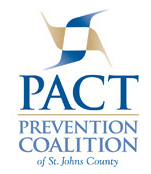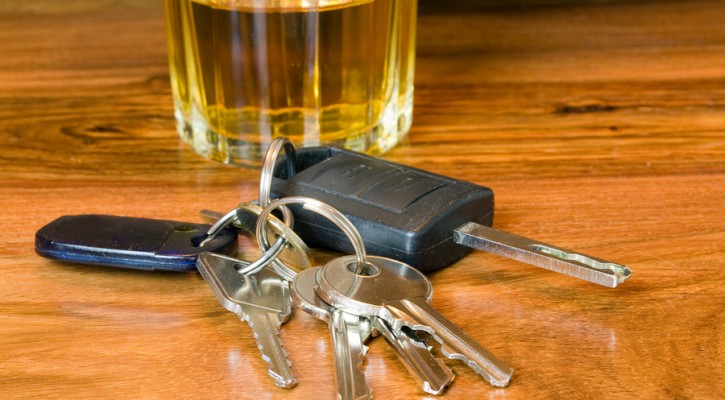Category Archive: Drunk Driving
Beyond the Breathalyzer; Testing Drivers For Drugs
November 21, 2011
Concateno, a company made up of several drug and alcohol testing labs and manufacturers throughout Europe have announced the development of a simple hand held road-side testing device that police can use to test drivers for the presence of drugs.
While drugged driving doesn’t get as much press as driving under the influence of alcohol, it is a serious problem and apparently, drug use among drivers is just as prevalent as alcohol use. According to the Concateno press release, an Australian study showed that 35% of drivers hospitalized after a crash showed the presence for illicit drugs compared to 29% testing positive for alcohol.
The National Highway Traffic Safety Administration (NHTSA), latest study on drugged driving showed that among the total number of drivers who were killed in car crashes in 2009, 18% tested positive for drugs. Those figures don’t represent the depth of the problem because not every state tests for the presence of drugs. Among the fatally injured drivers who were tested, 33% showed the presence of drugs in their system at the time of the crash.
A 2007 study by NHTSA showed that at least 16% or one out of every six weekend nighttime drivers tested positive for the presence of drugs. The 2008 Monitoring The Future Study, an ongoing annual assessment of drug and alcohol use by high school students showed that, among the respondents, one in ten high school seniors reported driving after smoking marijuana within the two weeks before the interview.
The new hand-held device tests a single oral fluid sample and can, within five minutes, test for the presence of cocaine, cannabis, opiates, amphetamines and methamphetamines. A previously developed device made by the same company has been used by police forces in Italy, Spain, Australia and Croatia. The new device has not been approved yet for use in the United Kingdom but there is strong public pressure to add it to law enforcement’s arsenal of weapons against drunk and drugged driving.
In Australia, where the device has been used for some time, officials report that, over the past five years, the number of drivers charged with driving under the influence of drugs has dropped by half.
This is a device that American law enforcement agencies may want to consider adding to their equipment list to more effectively remove drugged drivers from America’s roads.

Prepping for a Safe Prom: Communication
April 22, 2011
“To effectively communicate, we must realize that we are all different in the way we perceive the world and use this understanding as a guide to our communication with others.”
-Tony Robbins
Prom season is fast-approaching and many parents are busy helping their teens gear up for one of the most exciting time in their teen’s life. Often overlooked is the need for these preparations to include frank, specific, and honest discussions with teens about how to stay safe and avoid alcohol or drugs on prom night.
Most of the teens shrug off their parents’ advice, believing the discussion stems from parents not understanding that their teens just want to have a fun carefree night. But in reality, this comes from a place of understanding: these parents had proms in their day, and know how easily things can spiral out of control. It’s usually guidance on helping teens avoid decisions they might regret.
Here are some tips on exactly what to discuss:
- Communicate with other parents; then, talk to your teen about their friends’ parents. Being part of a social group does not guarantee that other parents share the idea of a zero-tolerance policy for alcohol. Some parents even choose to “look the other way” when hosting teen get-togethers, reasoning that at least, the teens are in a “safe” environment. This is illegal in any state. Communicate with these other parents to find out if they know where their teens will be after prom night. Even better, if the teens plan to spend time in another teen’s home, find out if the parents are willing to chaperone. Communicate the importance of accounting and locking up alcohol in their homes. When communicating with your teen, make sure that they know that it’s always alright to say “no.” Ask if they will be riding with teens whose parents also have a zero-tolerance policy for alcohol.
- Come up with a safety code. This could be something a teen may text their parent if they are in an uncomfortable situation, and they need an exit. Something like a code to signal, “get me out of here!” On your end, make sure that your teen knows that you will be discrete upon receiving this code. This could also be something that a teen can do to “check in” with their parents. Maybe texting something like, “dinner was awesome!” could mean that the teen has arrived at an after-prom destination safely.
- Discuss the teen’s planned itinerary for the evening, and require the teen to inform you of any changes. Make teens feel they could trust you not to bug them on prom night, if they promise to keep their end of the bargain by checking in and informing you of any changes in the plan.
Doing so will hopefully make prom night a “night to remember,” instead of being “the night when my mom bugged me all night, until I got home.” Pre-plan, communicate and have fun!

Do You Know the Law?
December 10, 2010
Do you know what is considered to be legal verses illegal? Do you know what the consequences are if you break the law? Is it a fine, jail time or some other penalty? Many people get so busy with their daily lives that they don’t keep up-to-date on new laws or share with family and friends their knowledge of the laws that they are familiar with. Although sometimes, people innocently think they are sharing information, they may unknowingly share information that is false or outdated.
Ignorance of the law is not a justifiable excuse for breaking the law. In so many situations, it is easy to react without considering the consequences. Learning about the laws in your state will not only help you to be more aware personally, the knowledge you gain can be shared with family and friends to help prevent negative situations from occurring.
Fortunately, several groups of civic minded community members are collaborating together to help educate the public on the laws and consequences in their community. These groups come from the sectors of law enforcement, judicial, education, prevention, and treatment and include agencies, services and advocates.
One such group is PACT Prevention Coalition of St. Johns County. The coalition is comprised of groups of people from diverse disciplines in the community including members who represent: youth, parents, education, business, government, faith-based, media, law enforcement, substance abuse/mental health providers, youth serving agencies, healthcare, civic/volunteer groups, and community residents. The goal of these coalitions is to create safe, healthy and drug-free communities and in turn, making them better places to live. They strengthen the community and its members with technical assistance and training, public policy, media strategies and marketing programs, conferences and special events. Heidi Matheny, Coalition Coordinator for PACT Prevention Coalition is currently compiling a booklet to be given out at the local high schools and colleges. Heidi said ”We wanted to enable and encourage youth to make empowered decisions by taking the time to know and understand the laws while weighing the consequences of their behaviors. This booklet is also intended as a tool for parents.”
The booklet is going to print and the PACT Prevention Coalition is looking to distribute 30,000 copies from this first printing.
Some items that are covered include:
- Crime Defined
- Principal Theory
- Alcohol
- Tobacco
- Parties
- Computer Crimes
- Mandatory Consequences
Many others topics are also included such as potential future obstacles and local resources to contact.
Take time to check in your community to see if this type information is available. In St. Johns County you can go to the website at www.pactprevention.org, click the contact link and request your copy. Join other civic mind people to help make our communities the best they can be.

Be Aware of “Black out in a can” or “Liquid Cocaine?”
December 2, 2010
Lately, there has been much attention given to a new version of alcoholic drinks that are gaining popularity. The specific brands cited are Four Loko, Joose, Max and Torque combine large does of alcohol with caffeine. These drinks are marketed to youth, with colorful packaging and flavors including grape, fruit punch, watermelon, and lemonade. Four Loko is said to contain the alcohol equivalent of up to five beers (12 percent alcohol) and the caffeine of one cup of coffee plus a can of Red Bull. The caffeine buzz delays the ability to feel the effect of the alcohol or monitor their body’s response. Before the drinker is aware, they have consumed several beers at once and are on a caffeine high, increasing the likelihood of alcohol poisoning. Because alcohol poisoning is so frequent after drinking these drinks, the term “black out in a can” has become a common nickname for these alcohol energy drinks.
These drinks first caught the attention of doctors, hospitals, police, and government officials as they began to warn the public of the dangers the drinks pose and tried to force changes in packaging, warnings and content. The containers look attractive and to the unknowing eye could easily mistake the beverage for an energy drink. The terms “liquid cocaine” or “cocaine in a can” are also used as slang for these drinks, because of the high amount of caffeine, taurine and guarana. The risk of caffeine intoxication is high and symptoms after consuming the drink include restlessness, increase in blood pressure, heart rate and heart palpitations. Emergency Room doctors report that patients are coming into hospitals drunk and also complaining that their hearts are pounding out of their chests.
But now, the alarm level has risen, as college and university campuses across the United States are banning the drinks as well. The University of Florida conducted a study published in the journal Addictive Behaviors. The study found that of the patrons exiting bars, those who drank energy drinks mixed with alcohol were three times at risk of leaving a bar highly intoxicated and were four times more likely to intend to drive after drinking than bar patrons who drank alcohol only. “There’s a very common misconception that if you drink caffeine with an alcoholic beverage the stimulant effect of the caffeine counteracts the depressant effect of the alcohol and that is not true,” said study co-author Bruce Goldberger a professor and director of toxicology in the UF College of Medicine. “We know that caffeine aggravates the degree of intoxication, which can lead to risky behaviors.” ABC News interviewed Doctor Mary Claire O’Brien of Wake Forest University on the study she conducted on the effects of combining alcohol and caffeine. Her results showed that students who mix caffeine and alcohol are “twice as likely to be injured, require medical attention, ride with an intoxicated driver, and more than twice as likely to take advantage of someone sexually.”
Colleges are not the only ones to feel the effects. Nickie Gorce, Director of Prevention with EPIC Community Services, has seen a large increase in alcohol-related referrals to her agency. Many of the referrals are for youth and young adults under the legal drinking age of 21. “Their impulsive behavior after consuming these types of drinks would appear to be out of control, which is frequently the result when adolescents or young adults binge drink (5 or more drinks in rapid succession). The increased risk taking behavior such as driving under the influence is an unintended outcome when individuals consume alcohol energy drinks. In addition, the Blood Alcohol Content (B.A.C.) level after consuming just one of these beverages like Four Loko may be twice the legal limit.”
With both the alcohol and caffeine being diuretics, dehydration is another real risk leading to other health complications as well, including a terrible hangover. When the intoxication effects wear off, not only do you have a crash from the high doses of alcohol, there is also a caffeine crash that occurs with most people.
Several states, including Michigan, Washington, Utah, Oklahoma and New York have banned the sale of these drinks and some vendors are voluntarily removing them from the shelves. As the safety concerns mount, the Food and Drug Administration has been reviewing the products and has stated they want the drink in its current state to be removed from shop shelves by December 13.

Preventing Underage Drinking and Driving
November 22, 2010
Underage drinking should and does pose concern for parents. Combine drinking with teens who are receiving their learner’s permits or full operators license and you have a recipe for disaster.
For parents and guardians, it will be up to them to make sure that they set the parameters and guidelines to keep their teens safe at all times. But doing so without imposing too much control and giving away too much freedom is essential. Otherwise, teens may make the wrong choices when faced with decisions, they may soon regret.
So what can be done? What can be done to help a teen from getting into preventable bad situations?
There are a few steps parents can take, including:
Get to know the parents of the teen’s friends – Acquaint yourself with the parents of your teen’s friends. Make sure you are on the same wavelength when it comes to what your expectations and parameters are for your teen. Also, treating your teen’s friends with respect or as if they are family will make them think twice before trying something irresponsible. If another parent isn’t too concerned about underage drinking, put out facts. Never argue, instead, share your concerns and the reason you have them, along with the facts and statistics on underage drinking and how it affects the teenage brain. Once they understand the science and statistics, hopefully they will change their minds.
Hide/Lock up the alcohol – Remember, out of sight, out of mind. Don’t make it easy for them to find alcohol and be irresponsible. Ask the parents of your teen’s friends to do the same. Homeowners and other adults can be held liable for what occurs in their home whether they were present or not. Be prudent and not an enabler for reckless teen behavior.
Be the example for them to follow – Be consistent in your message. Never break the rules you make or take part in illegal, unhealthy or dangerous substances or activities. Your actions are the most powerful message to your teen of what is acceptable in your family.
Limit teen driving times and vehicle access – Create and follow a parent-teen contract. Give them limits as to when they can drive a vehicle and how often they can use it. Check in often with your teen. Be sure you know how to reach them. Know where they’re going and ask whether anyone will have alcohol and if adults will be present.
Support the law – Most of the underage drinking laws have made bars and liquor establishments responsible for whatever damages an underage customer might do or incur. They are also likely to have their licenses for selling revoked, if proven to be selling to minors or someone with fake ids. Law enforcement is also cracking down on the makers of fake ids, and violators are given harsh penalties if proven guilty.
Install an anti-distracted driving mobile application – Most of these apps are designed to combat distracted driving, but they can also be used to set safe driving zones, and can alert you if a teen is going over a certain pre-approved point, like, say, a bar or known trouble area. It could also help prevent your teen from getting into a distracted driving crash.
Talk to your teen – Have a straight-up conversation about the effects of drinking and the dangers of drinking and driving. Make sure they understand the penalties, how it reflects on their legal and driving records and how that might affect them in the future. Tell them of your family’s history of alcohol and drug use, since there is a genetic predisposition towards risk of addiction. Be alert and ready to talk with your teen, when they come in at night. Ask them about how their evening went and be prepared to tackle what they share with you. Having an open conversation and understanding with teens can often do wonders for both the teen’s safety and their relationship with their parents.
Recognize and praise them when they have been responsible and demonstrated good judgment. Together with other concerned parents, many crashes that happen during the teenage years can be prevented. Be concerned and vigilant, but not overprotective. Teen drivers may seem like they are maturing to adulthood, but they are not quite there. Balancing expectations with responsibility and implementing precautions, will help to avoid the dangers of underage drinking and drinking and driving.
Learn more about Technology to Prevent Drunk Driving at the National Safety Commission.
